Can we have it all? Piaget Emperador Coussin XL Tourbillon
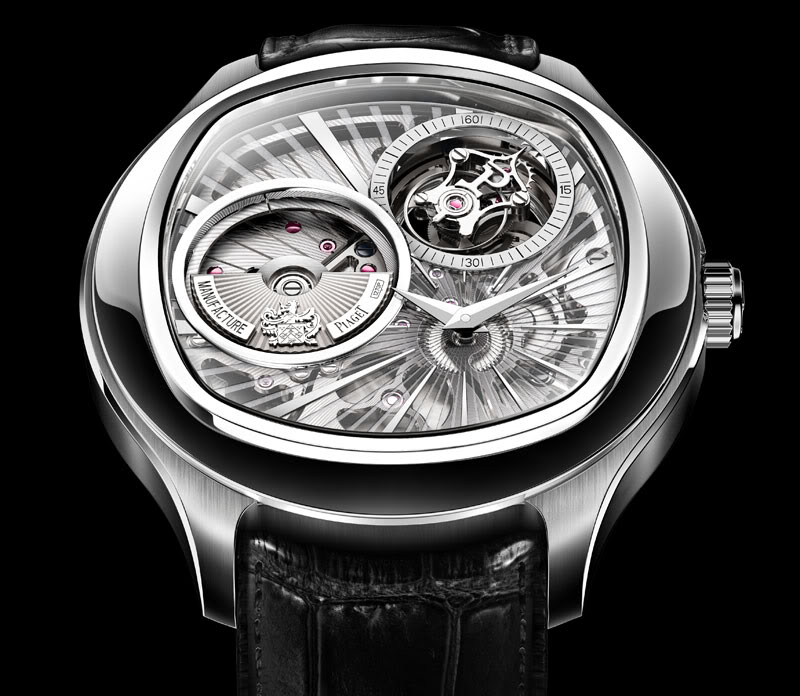
It is human nature to want it all, to want something better. It is this emotion that fuels ambition, is the thriving force behind development and in essence the reason why we continue to push the envelope. But sometimes there are quite a bit of boundaries between what we want and what is possible. The answer to that? Make it possible! It is what got us on the moon and how Piaget was able to give us the Emperador Coussin XL tourbillon.
The funny thing with this Piaget Tourbillon is that it is not so much what they achieved but how they did it. Of course a 5.5 mm thick automatic tourbillon movement is very impressive, especially when you are able to house it in a case so that the total thickness of the watch is only 10.4 mm, but that is only part of the charm of this watch. The real thrill is that Piaget achieved all this by, or perhaps because, putting the main features on the dial side of the watch!

This results in one of the most balanced asymmetrical dials in watch making history and it shows all the features we actually enjoy looking at in a blink of an eye. The flying tourbillon is king and placed like a crown on top of the hour and minute display that occupies the lower right corner of the dial. Being a one-minute tourbillon, it also acts as the seconds indicator. The tourbillon carriage weighs only 0.2 grams and comprises of 3 titanium bridges. At the place where the 9 o’clock would positioned, on a ‘traditional watch’, this Piaget features a micro-rotor! This breathes the air of the legendary caliber 12P, Piaget’s former record holder for the world’s slimmest automatic movement that was introduced in 1960. A legacy that is followed up by caliber 1200P.
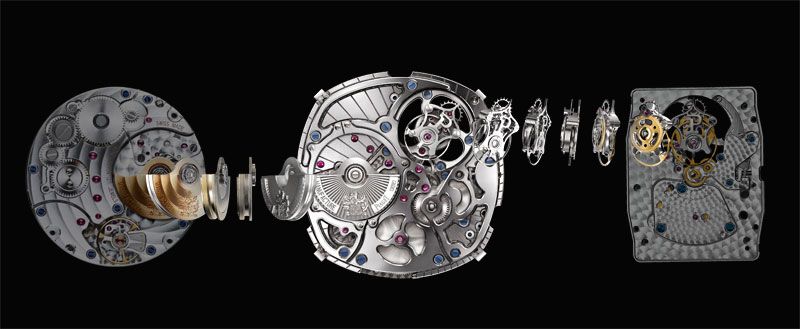
An extra appealing factor is that the movement itself is actually cushion shaped, just as the watch. This also means that this Piaget has nothing to hide, so no unattractive spacers that some watches need to fill the gaps between movement and case, and that it can show off all its glory.
The dial on this watch is a piece of art in its own right. It is amazing to see that while being so ultra-thin it still consists out of different layers that combined create a fascinating 3D-effect. A sunburst guilloche on the main plate stretches out from the center of the hands to the edges of the movement in a satin brushed finish. Some of the bridges are mounted on top of this, and since they are skeletonized they add a great amount of depth to the movement. Also mounted on top of the main plate is the micro-rotor. To give it substantial weight to compensate for its smaller diameter it is made of 18K gold that has a guilloche finish and features Piaget’s coat of arms.
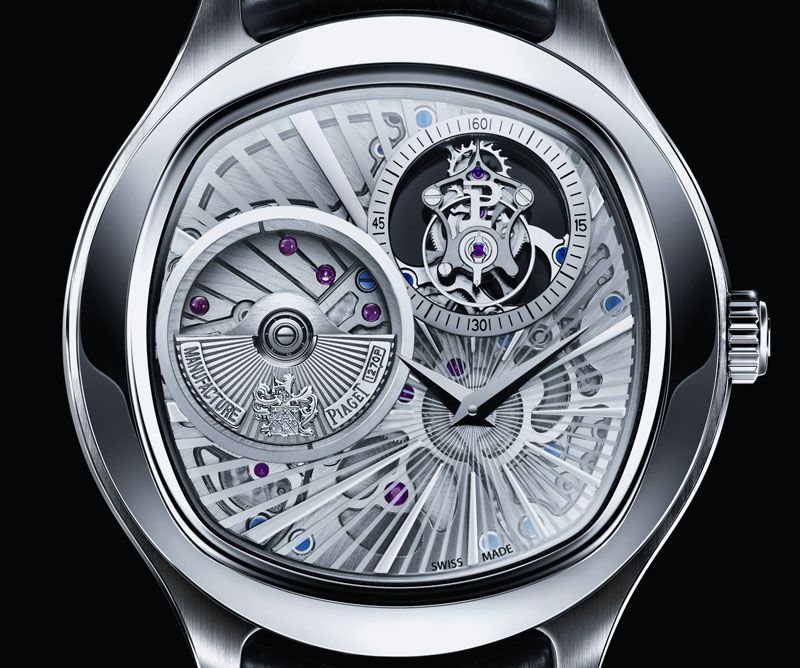
The entire main plate and bridges, excluding the openings for the tourbillon and micro-rotor, is then covered with a dial made from sapphire crystal. This dial features a guilloche motive that is lasered in it. This motive actually covers for the most part the guilloche motive on the main plate, adding understatement. Polished 18K gold surrounds and highlights both the micro-rotor as well as the tourbillon, while some of the guilloche on the dial is inlayed with gold to double as a hour marker. This all together results in a spectacular dial that also achieves to unite the different functions, features and decorations in harmony.
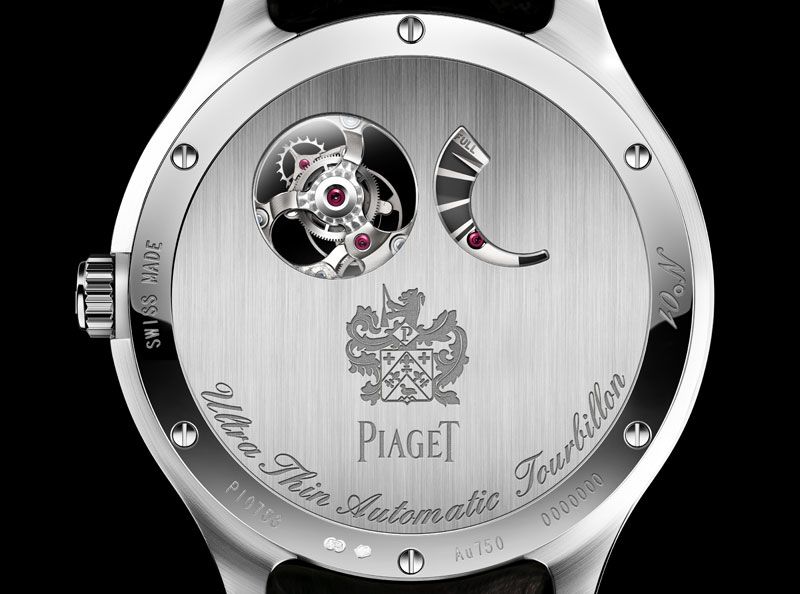
A glass back is not all that interesting anymore when you can see the majority of the movement at the front, including the rotor. But Piaget wouldn’t be Piaget if they didn’t compensate somehow for all that splendor on the dial side. The back side of the movement shows the gear-train and a power reserve indicator, along with giving you a peek at the other side of the flying tourbillon. Interesting is that Piaget’s signature circular Cotes de Genève use the tourbillon as its center point, while the guilloche on the dial tries to draw as much of your attention as possible to the actual time display of the watch. This is indeed a try because the tourbillon and micro-rotor will be fighting hard to distract you from actually reading the time. As a practical note; because the hour, minute and seconds are all located on the right side of the dial it makes it easier to check the time when the watch is actually hidden under a cuff or jacket.
As the name already points out, this Piaget is extra large, 46.5mm in diameter to be precise. That is quite a bit of real estate but Piaget has no wasteland here that simply makes the watch unnecessary large. The movement itself is 34.9mm in diameter, leaving 5.8mm per side for the case. This sounds like quite a bit but it is actually necessary to give the watch the right proportions. Great benefit is the overall thickness of only 10.4mm, making it not only the thinnest cased automatic tourbillon in the world, but also one that despite its large diameter can be worn comfortably even when you have smaller wrists.
Currently the Emperador Coussin Tourbillon is only available in white and pink gold, but knowing Piaget I wouldn’t be surprised if a platinum and a Haute Joaillerie version will be available in the near future.
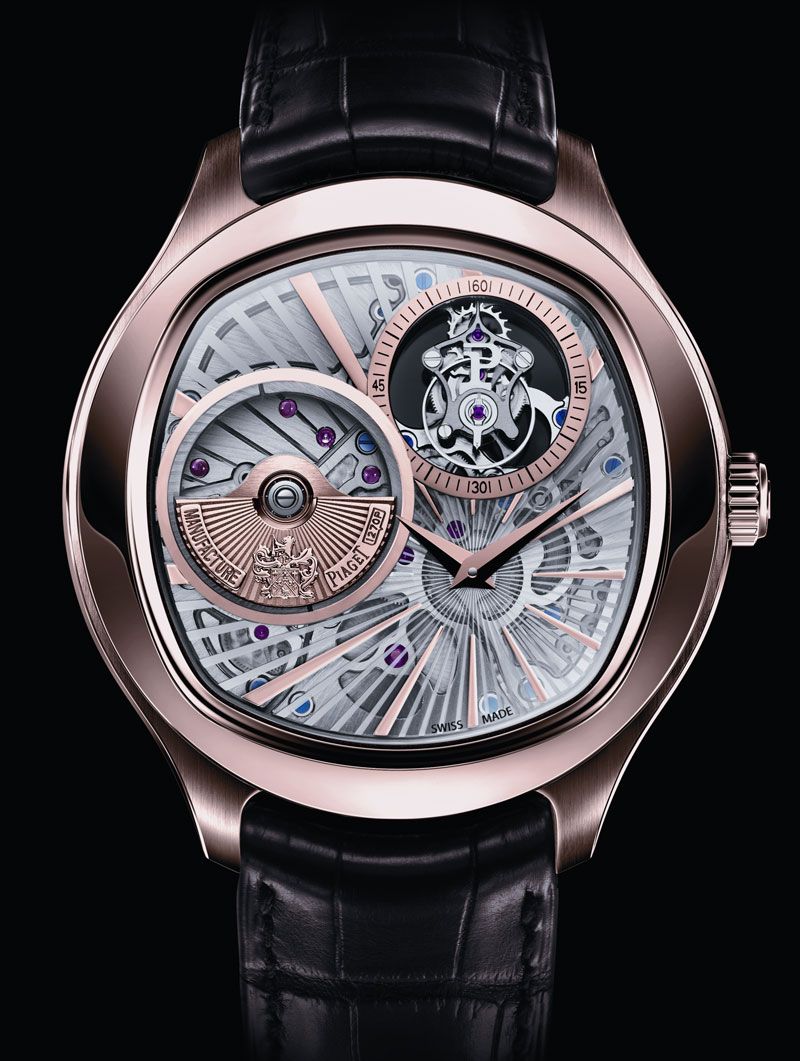
More information can be found at the Piaget website and official Facebook page.




4 responses
Pretty neat with the rotor on the front… not my kind of watch but still a nice feature.
Cool tourbillon, I am sure about how it works,
and I love the way it looks.
Great read Martin.
The looks of this Piaget are indeed unique. Personally I was excited to see a brand do something truly different with the traditional Tourbillon!
Wonderful read, Martin. Piaget has come up with something very special here not only because of the record set but in the aesthetics. Oftentimes in a quest for records, the overall look gets second fiddle. Here the blend comes together in a triumph.